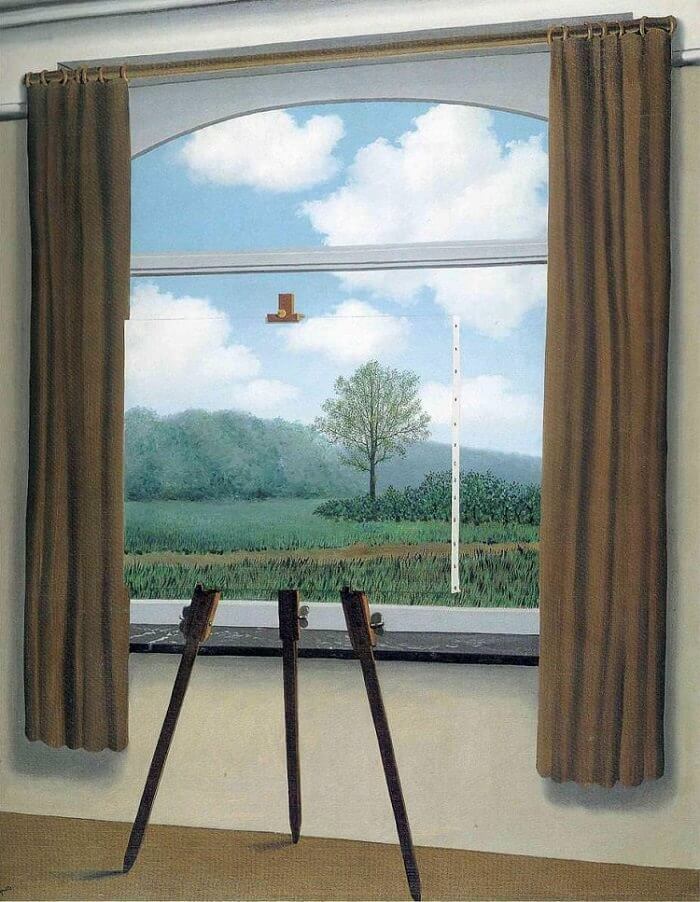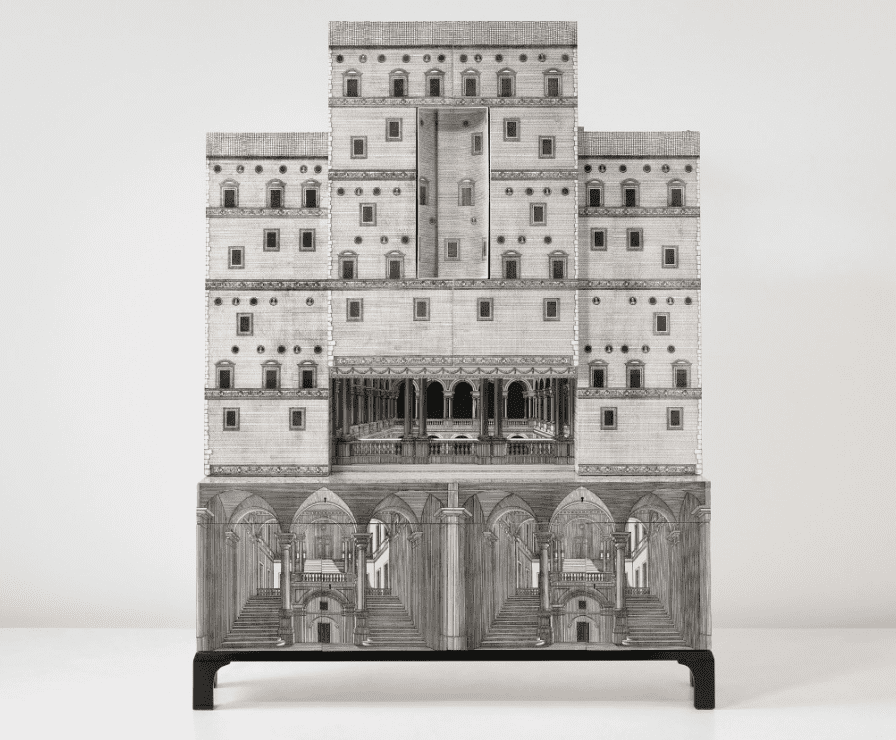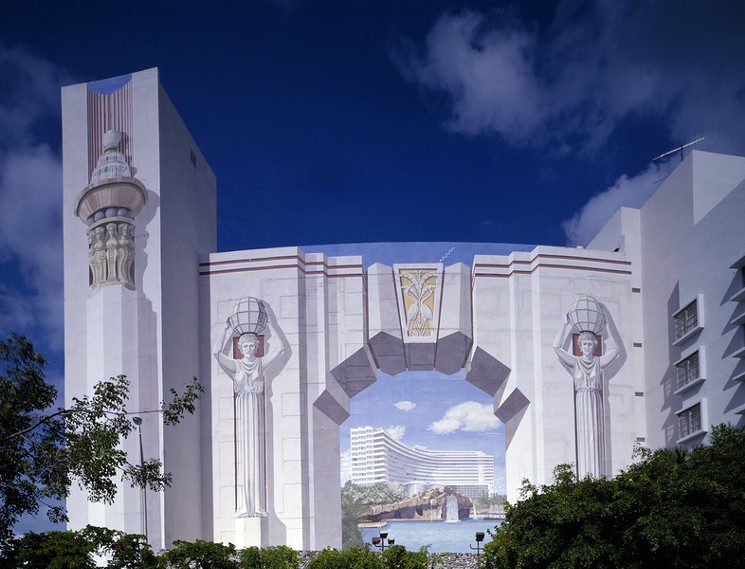Trompe l’Oeil, the oldest and most intricate form of optical illusion, has captivated the world for centuries. From Van Gogh’s Starry Night to the illusion of “floating” ships, our fascination with optical illusions is timeless. What started as a practical joke in Ancient Greece (or so the story goes) granted painters a new technique to play with: perspective. And it’s still being used in interiors today, giving depth and dimension to spaces in homes, restaurants, yachts and more. Let’s take a closer look.
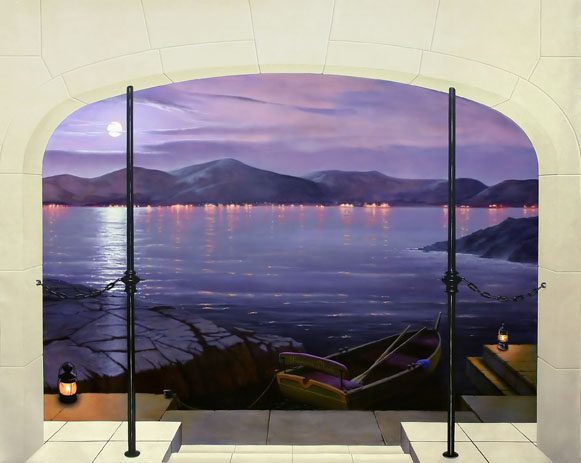
Trick the eye with trompe l’oeil
Taken from French, the term “trompe l’oeil” literally translates as “to trick the eye”, so-named because of its clever ability to create very convincing three-dimensional effects from two-dimensional images. But how? The technique relies on using a combination of shading and colouring to bring certain parts of the image forward, creating the illusion of a real-life object protruding from the wall or canvas. And although the term wasn’t officially coined until the 1800s, there is evidence to suggest the technique was used much further back.
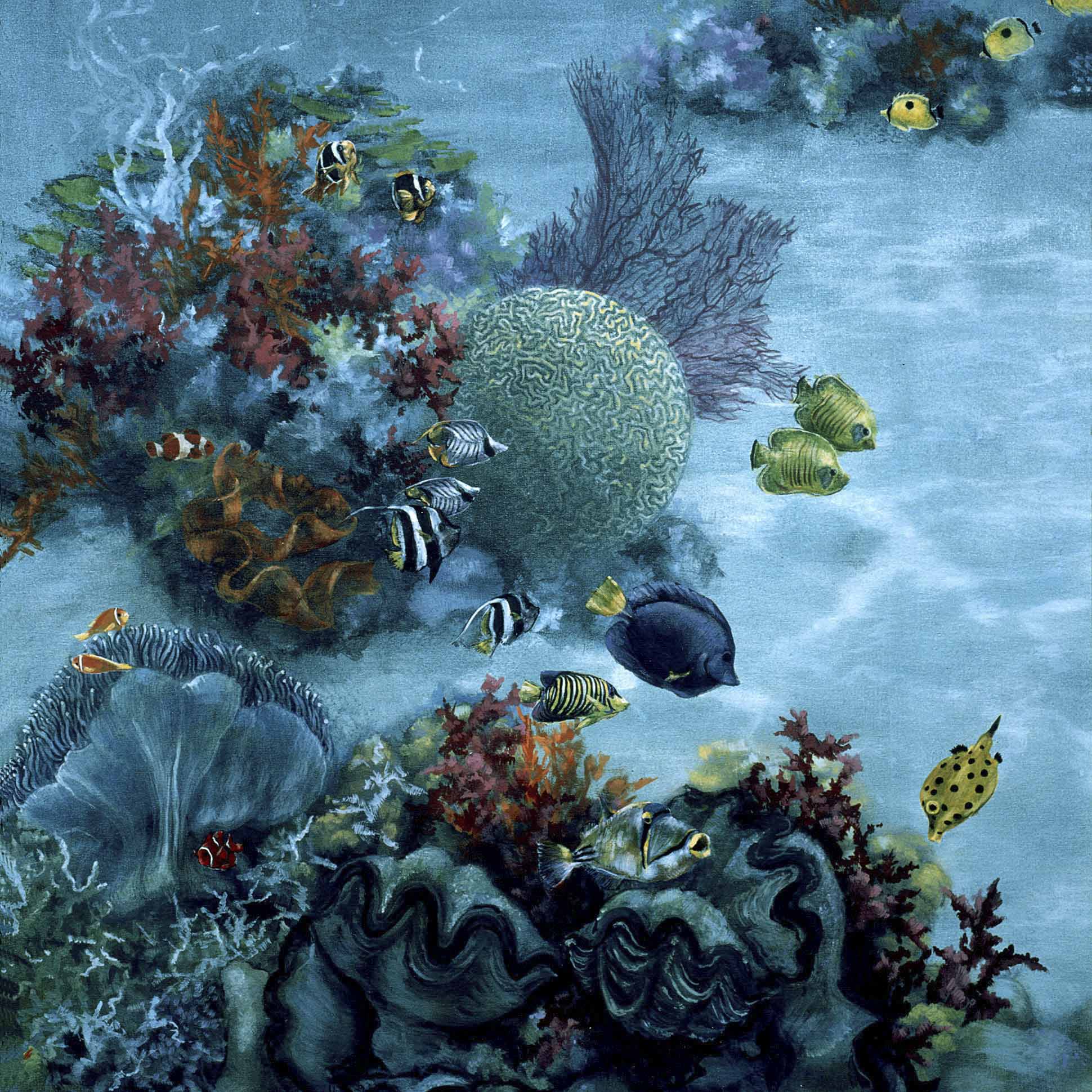
Our favourite Trompe l’Oeil examples from the past
Hailed as one of the great exponents of trompe l’oeil, 18th-century Swiss painter Jean-Étienne Liotard was known as a skilled portraitist – and for his sense of humour. In later life, his paintings took on a mischievous edge, and he used trompe l’oeil to create a series of visual illusions purely for his own entertainment.
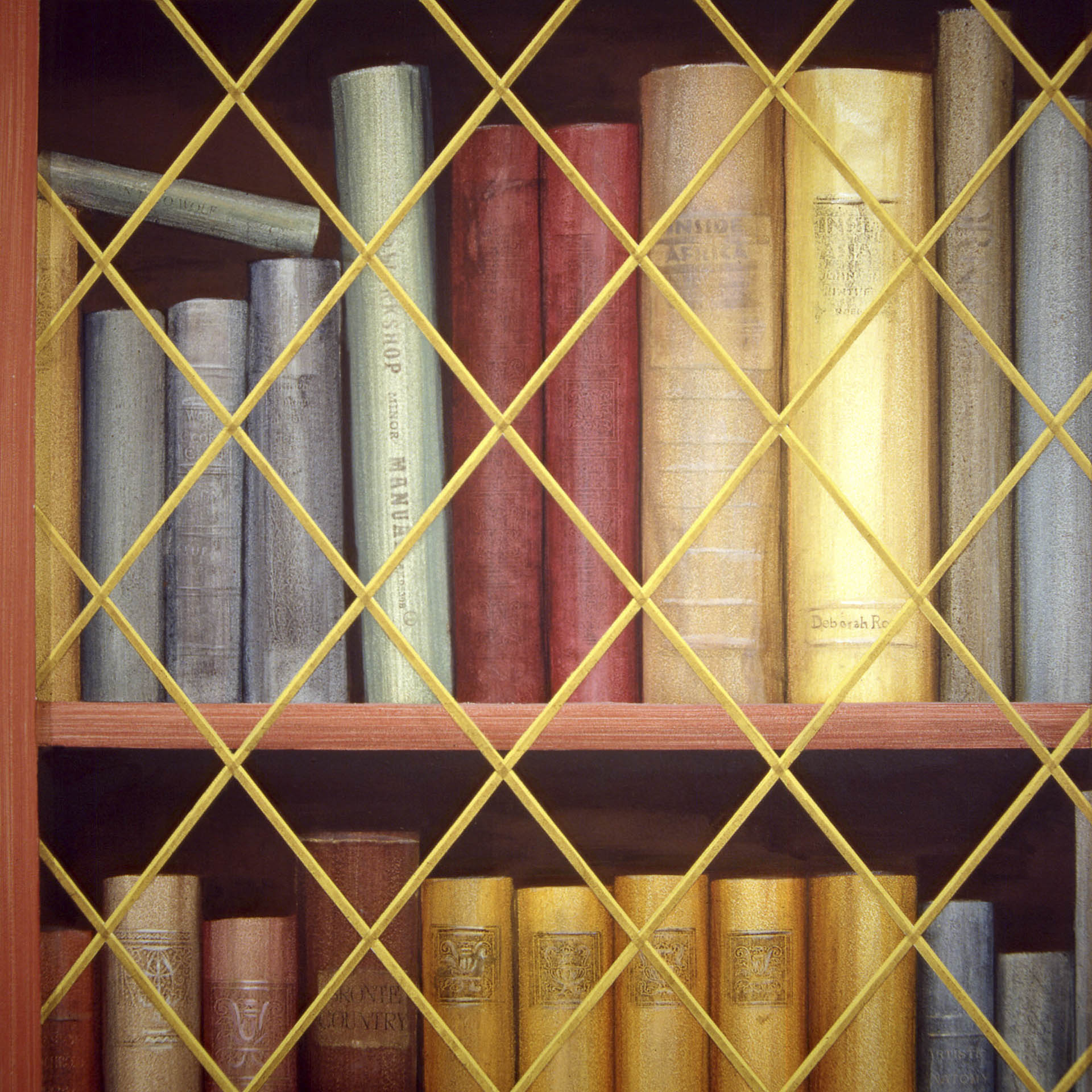
But the history of this clever technique dates even further back, with the earliest known examples linked to Ancient Greece. As the story goes, Greek artist Zeuxis painted a bunch of grapes so realistic that birds flew down from the sky in an attempt to eat them; in light-hearted retaliation, another artist, Parrhasius, asked Zeuxis to judge a trompe l’oeil he had created. “It’s just behind these curtains,” he’d instructed – but the painting was, in fact, of the curtains themselves.
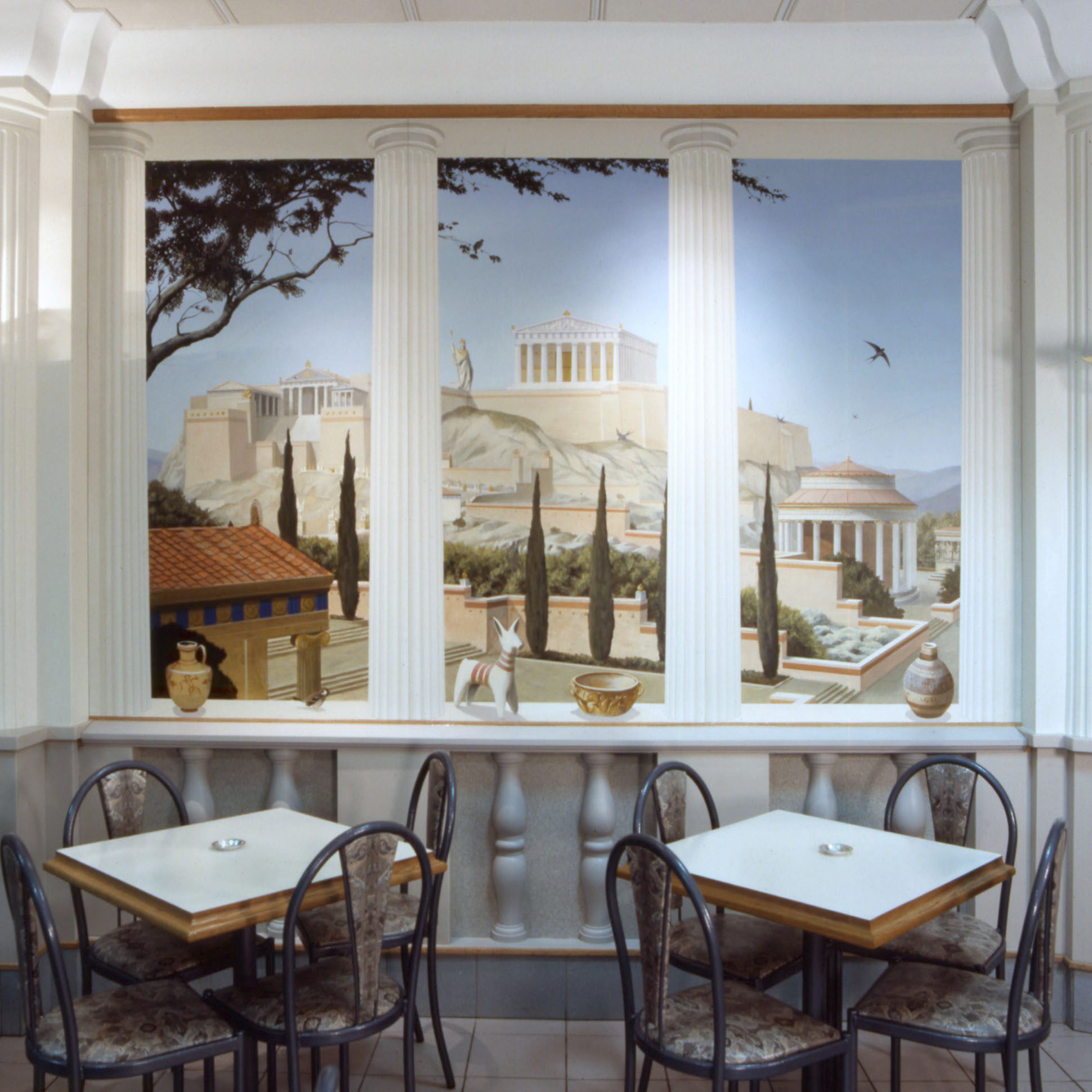
Since then, the technique has popped up both throughout the art world and in the world of interiors, from ceilings transformed into impressive faux domes throughout the Renaissance, to the views created in Rene Magritte’s famous series, ‘The Human Condition’. You’ll find evidence of trompe l’oeil in the ruins of Pompeii, too, where it was used to create the illusion of bigger spaces or better scenery. For contemporary takes on the technique, look to the likes of enigmatic street artist Banksy, who often uses trompe l’oeil to give the impression that his murals are interacting with the walls they’re painted on.
How can you use trompe l’oeil in luxury interior design?
Fast-forward to the 1960s, and you’ll see famed Italian painter and designer Piero Fornasetti introduce the technique to the world of interiors. His eponymous brand, still much-loved today, began by decorating a dinner plate with a convincing-looking three-dimensional fish. Nowadays, many designers use the technique in similar ways, creating everything from soft sofas made to look like they’re carved from wood, to wooden room separators painted to suggest they’re draped in soft folds of fabric.
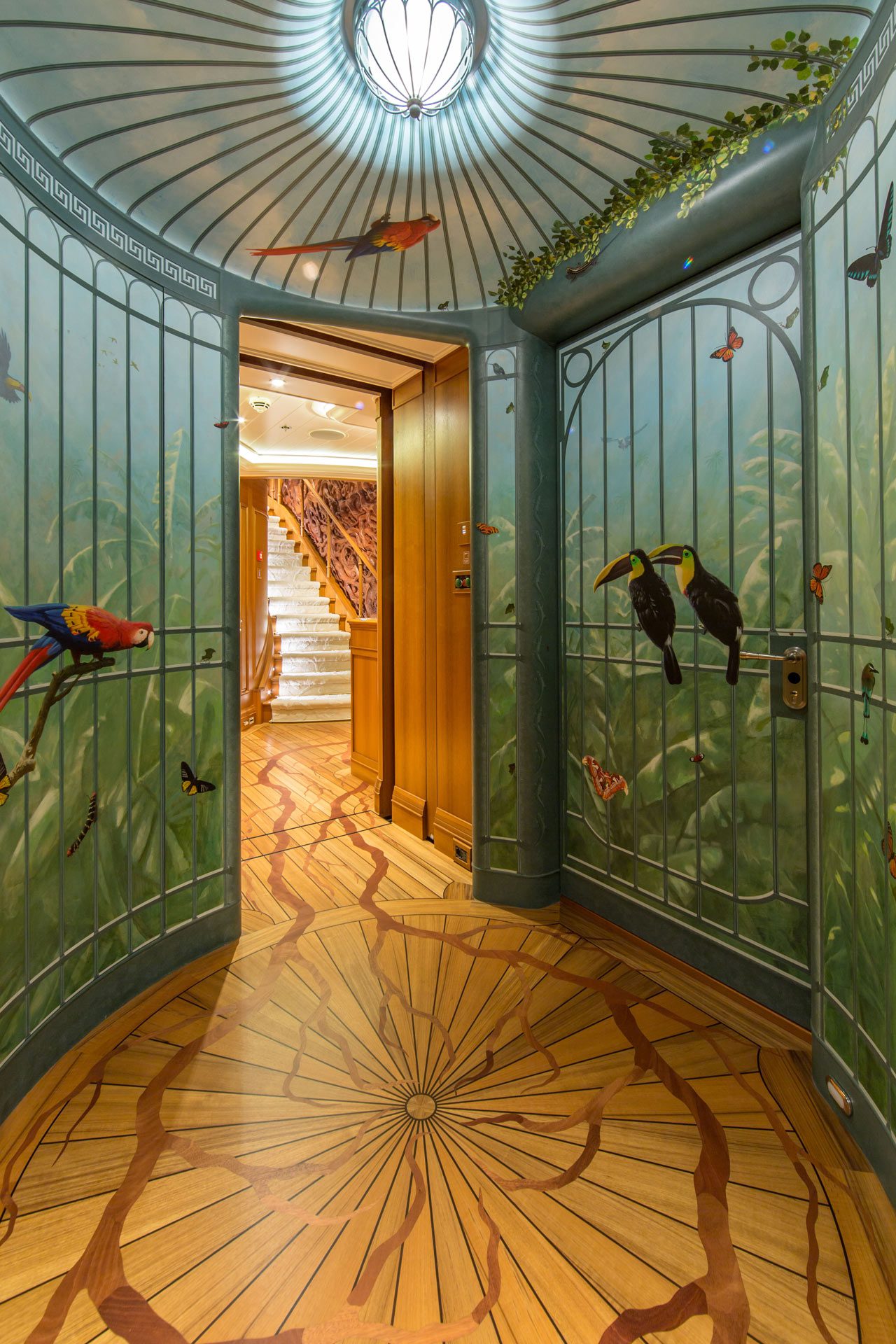
But it’s not only accessories that can be used to trick the eye with this intricate technique. Used correctly, trompe l’oeil can add depth to smaller spaces to make them appear bigger, or to fake texture – you’ll undoubtedly have seen wallpaper designed to look like wood panelling. We’ve used trompe l’oeil in our own works to create elaborate scenes that transport you to another world, like this tropical paradise on a private yacht above, and intricate, Renaissance-style ceiling work that brings light to this residential space.
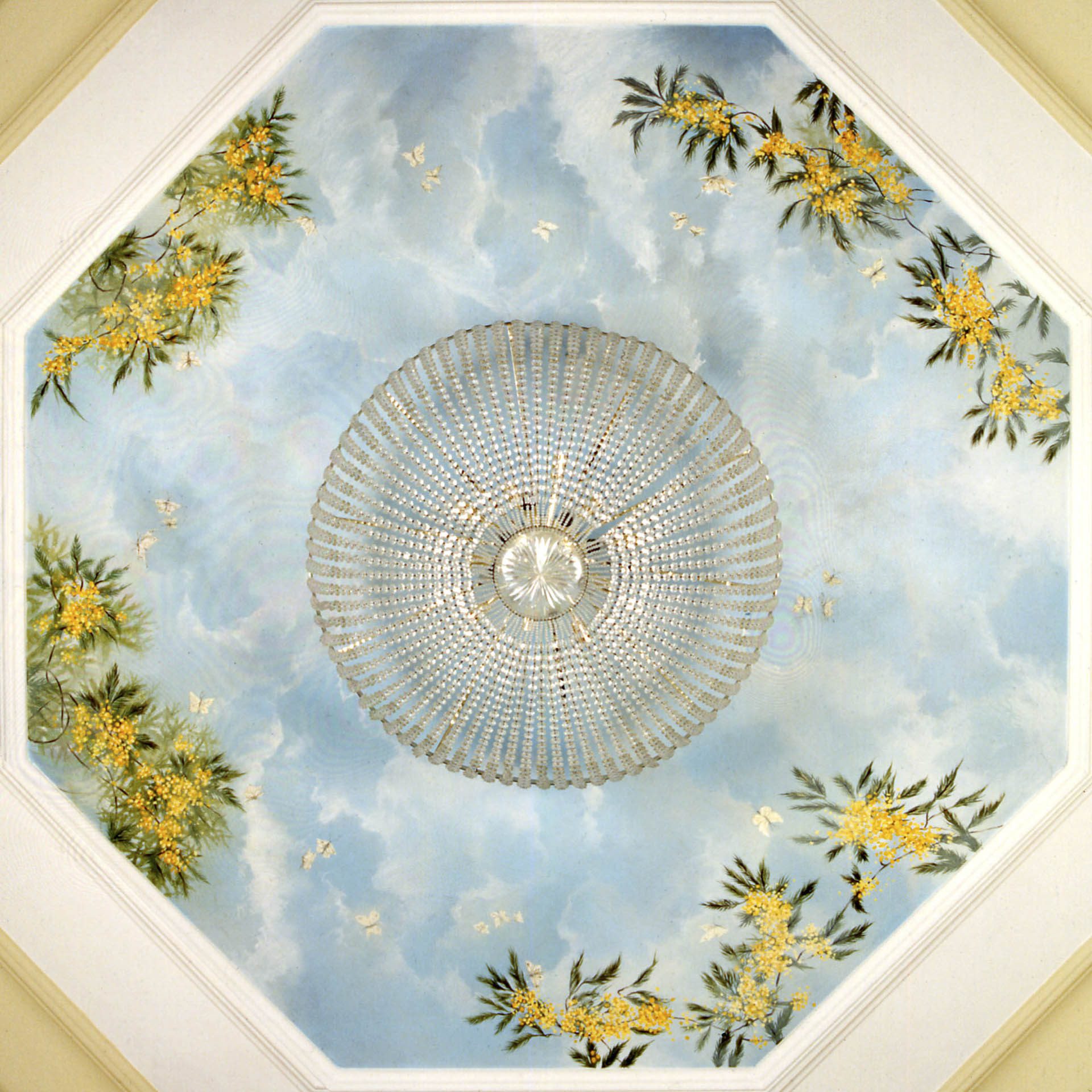
How Trompe l’Oeil can transform your space
Historic but far from out of date, trompe l’oeil is forecast to be the trending technique of 2023, with brightly coloured, modern takes sweeping across dining rooms, bathrooms and bedrooms as a way of adding depth and dimension in residential and commercial spaces. We’ve been refining our skills in trompe l’oeil for years, learning that a good mural requires understanding the demands of both the client and the setting. Look at the mural created below, for example; created for a private yacht, its colouring is complemented by the glistening gold hues of the staircase within the space it was designed for.
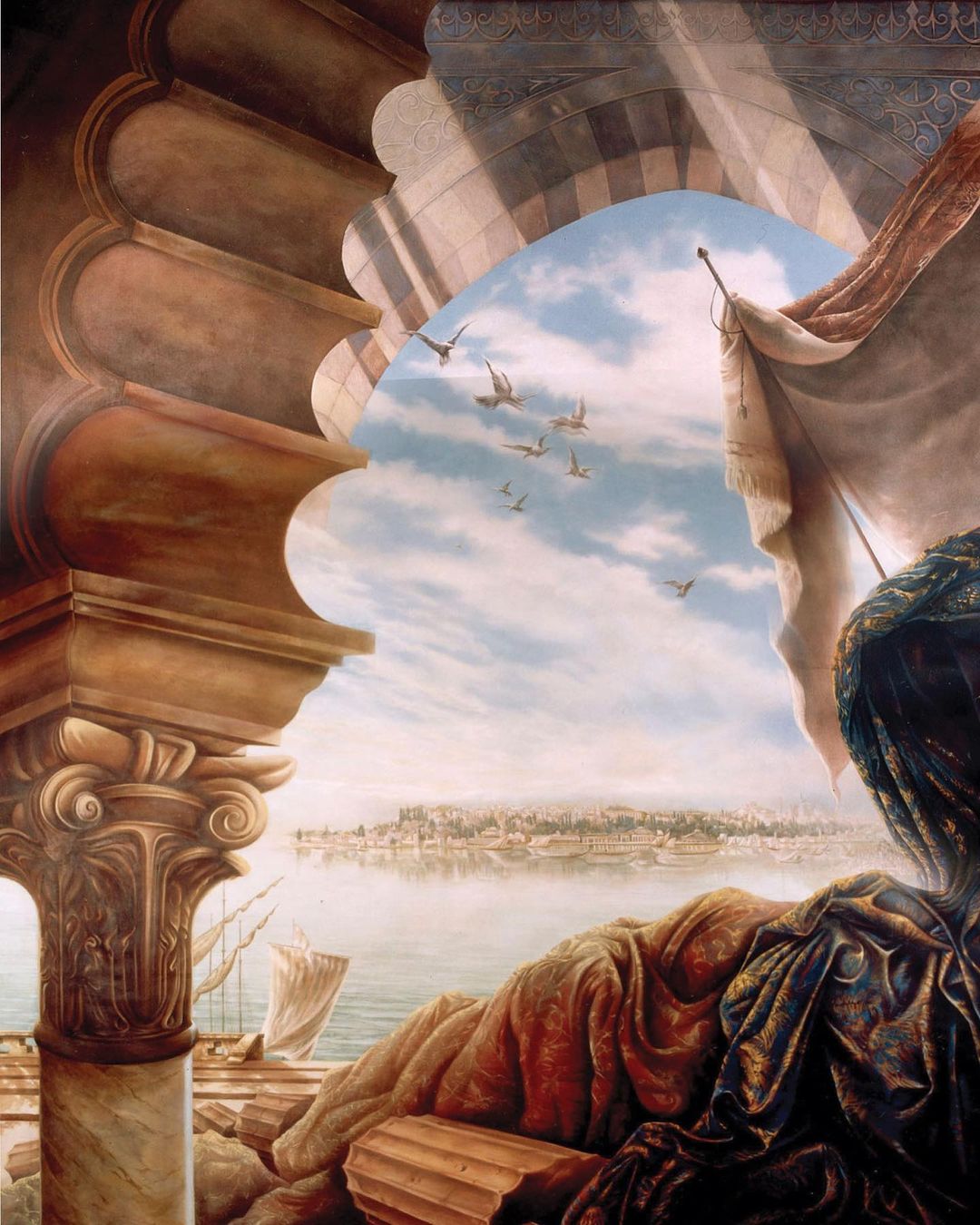
Our Lemon Tree mural, too, complements the painted ceiling in the spa area where it’s set. Created using acrylic paints, the panels were made using a special paint finish so that they closely resemble the look of an authentic fresco.
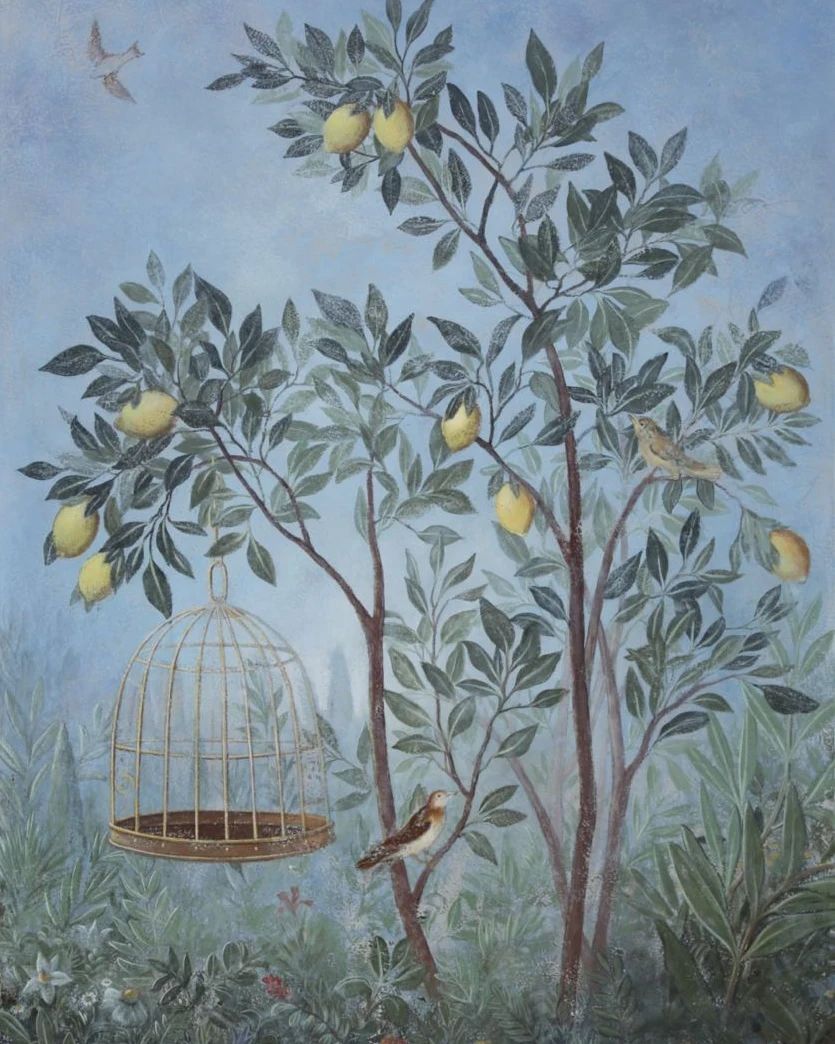
Our French Landscape with Chateaux mural, on the other hand, was hand-painted directly onto canvas to create part of a full-room treatment.
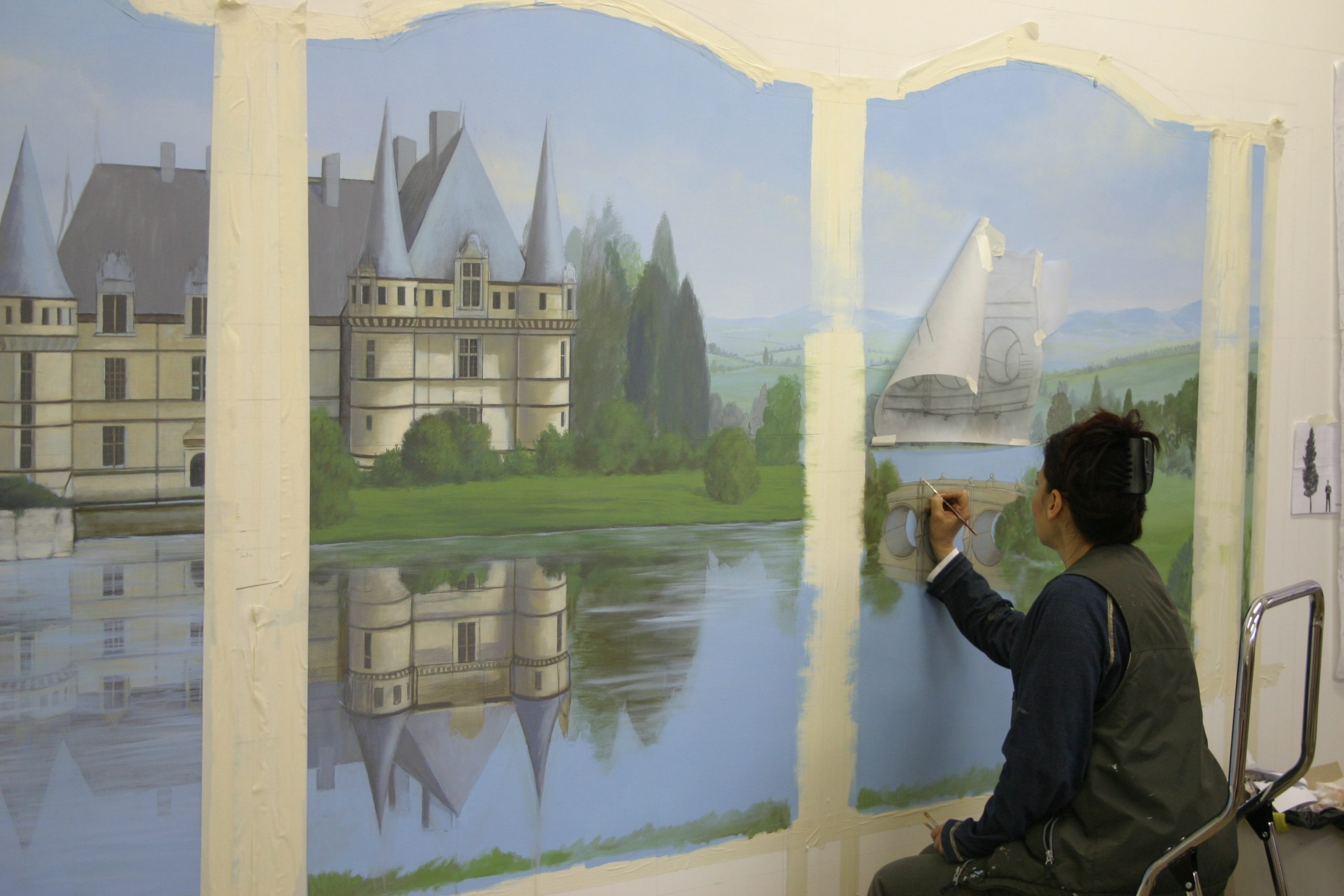
It’s not just interior spaces that can benefit from trompe l’oeil either; garden and balcony walls can also benefit from the technique, creating the illusion of a larger outdoor space – as long as your guests don’t venture too far, of course. Perhaps one of the most-famous examples of this is the eight-story mural that decorated the walls of Miami’s Fontainebleau Hotel from 1986-2002; created by artist Richard Haas, it gave the impression to passers-by that you could peer through a grand archway to the hotel’s swimming pool behind.
Create a breathtaking statement that your clients will never forget
From replicating stunning scenery to feigning a new architectural focal point, trompe l’oeil is a creative way to make an impressive statement. Want to know how the technique can work for your space? Explore a selection of our trompe l’oeil artworks and discover how we’ve used the technique in our own murals.
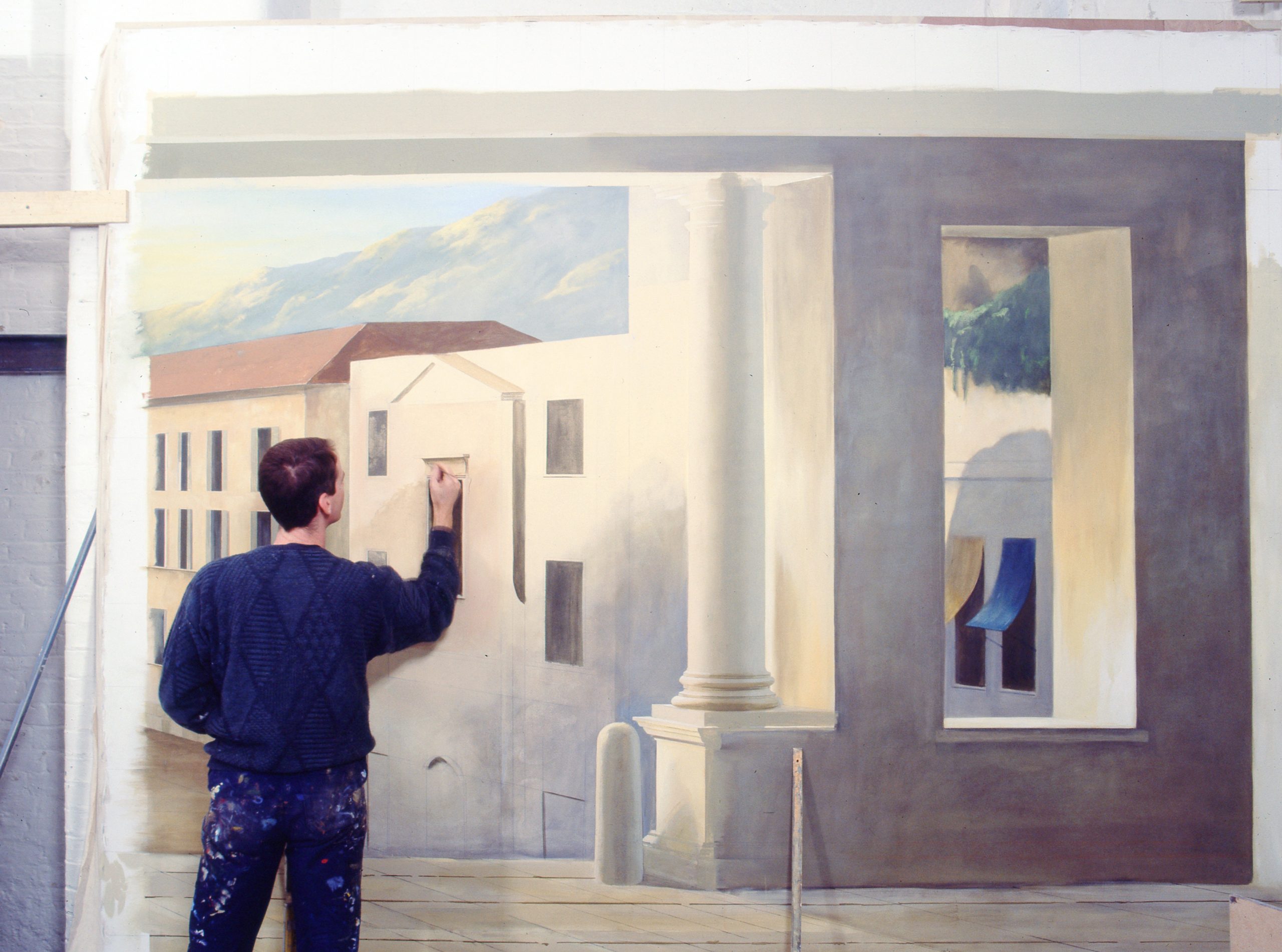
If you’d like more information or advice on how best you can use trompe l’oeil within your scheme. Get in touch with our team today.
